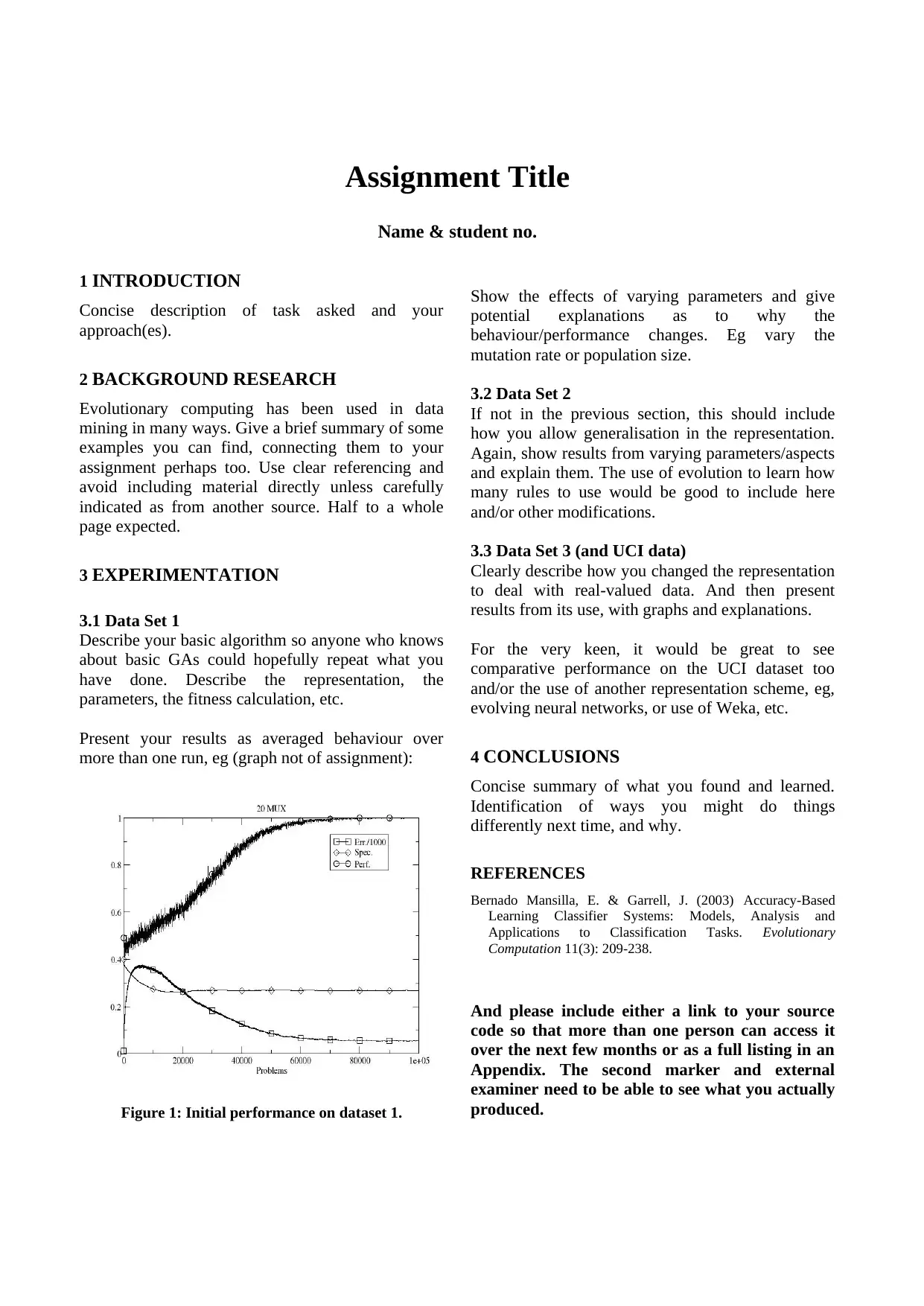Evolutionary Computing and Data Classification: A Detailed Report
VerifiedAdded on 2019/09/16
|1
|414
|403
Report
AI Summary
This report provides a comprehensive overview of the application of evolutionary computing in data classification. It begins with an introduction to the topic, followed by a detailed explanation of the methodology used, including the specific algorithms and datasets employed. The report includes a description of the experimental setup, a discussion of the results obtained, and an analysis of the performance of the different algorithms. The report also includes a discussion of the limitations of the approach and suggestions for future work. The report highlights the practical applications of evolutionary computing in the field of data science. The report also references relevant literature and includes a conclusion that summarizes the key findings and provides recommendations for future research. The report includes details about the coding and dataset used.
1 out of 1







![[object Object]](/_next/static/media/star-bottom.7253800d.svg)